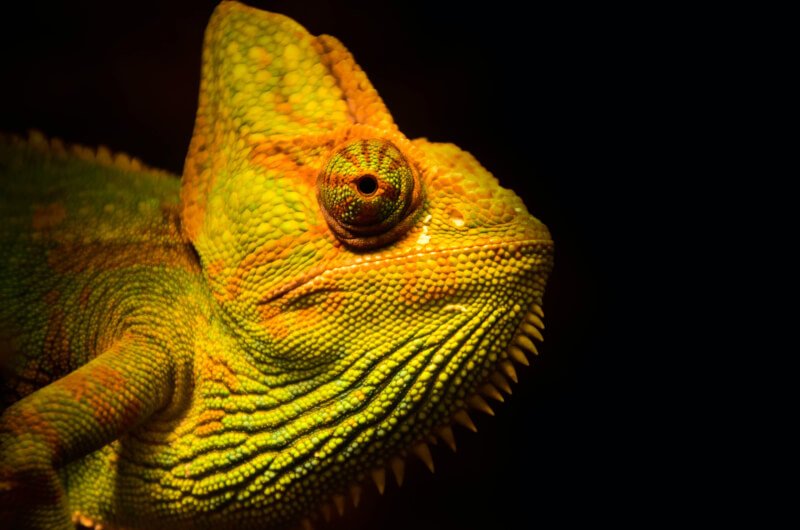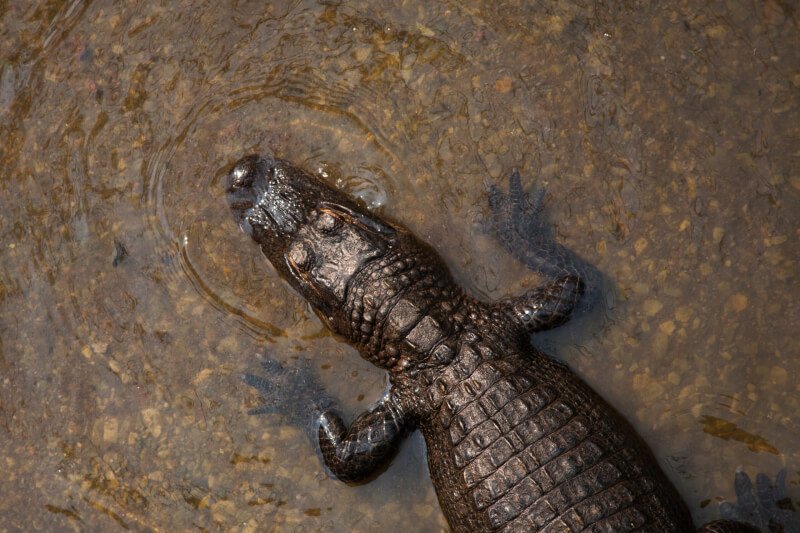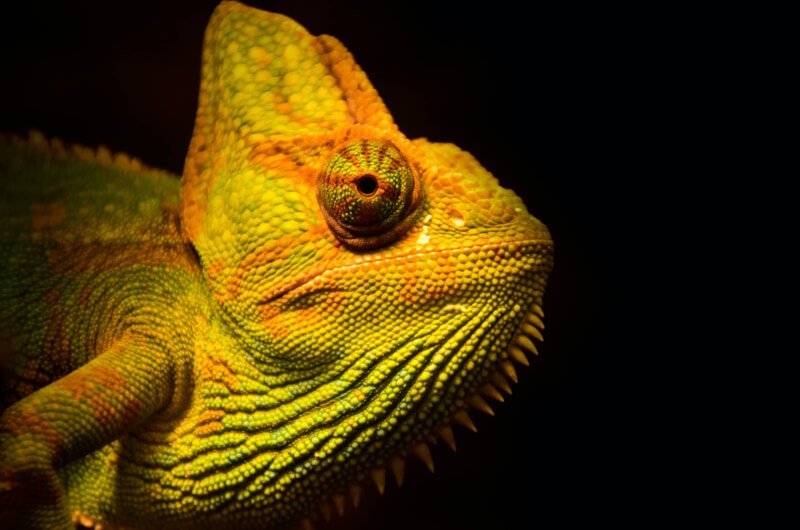Have you ever wondered what type of substrate would be best for your pet reptile? In this article, we will explore the various options available and guide you towards finding the perfect substrate for your scaly friend. From desert dwellers to tropical climbers, we’ll delve into the specific needs of different reptile species and help you create an environment that mimics their natural habitat, keeping them happy and healthy. Whether you’re a seasoned reptile owner or just starting your reptile-keeping journey, this article is here to help you make the best substrate choice for your unique pet.

Types of Reptile Substrate
When it comes to providing the best living environment for your reptile, choosing the right substrate is crucial. The substrate not only serves as a foundation for your reptile’s enclosure but also plays a vital role in maintaining their health and well-being. There are various types of reptile substrates available, each suitable for different species and habitats. Let’s explore the different options to help you make an informed decision for your scaly friend.
Sand
Sand is a popular choice for reptile substrates, especially for desert-dwelling species. It mimics the natural sandy environment found in arid regions. Sand allows reptiles to exhibit their natural digging and burrowing behaviors, providing them with mental and physical stimulation. However, it is important to note that not all reptiles thrive in sand, and some may accidentally ingest it while hunting or feeding. Therefore, it is crucial to research and ensure that sand is suitable for your specific reptile species.
Gravel
Gravel is another suitable substrate for desert species. It provides excellent drainage and helps maintain a dry environment. Like sand, gravel allows reptiles to dig and create burrows, which is essential for their well-being. However, caution must be exercised to ensure that the gravel is not too sharp or large to avoid any potential injuries to your reptile.
Bark
Bark is a versatile substrate that can be used for various reptile species. It is particularly suitable for desert, rainforest, and temperate climate reptiles. Bark provides a natural and aesthetically pleasing environment, mimicking the forest floor. It allows reptiles to dig, hide, and blend in with their surroundings. Additionally, bark holds moisture well, creating a comfortable and humid environment for species that require it.
Coconut Fiber
Coconut fiber, also known as coir, is derived from the husk of coconuts and is a popular choice for rainforest and tropical species. It retains moisture effectively, creating a humid environment similar to their natural habitat. Coconut fiber also provides excellent drainage and is easy to maintain. Many reptiles enjoy burrowing or laying eggs in coconut fiber, as it allows them to exhibit their natural behaviors.
Sphagnum Moss
Sphagnum moss is highly beneficial for rainforest and tropical reptile species. It aids in maintaining humidity within the enclosure and provides a soft and comfortable substrate. Additionally, sphagnum moss has antimicrobial properties, which can help prevent the growth of harmful bacteria. Reptiles that enjoy moist environments, such as tree frogs and certain types of geckos, will appreciate the presence of sphagnum moss in their enclosure.
Aspen Shavings
Aspen shavings are suitable for reptile species that require a drier environment and do not burrow extensively. It is commonly used for snakes, such as corn snakes and ball pythons. Aspen shavings are lightweight and easy to clean, making maintenance hassle-free. However, it is essential to avoid using cedar or pine shavings, as they can release harmful oils and cause respiratory issues in reptiles.
Cypress Mulch
Cypress mulch is an excellent choice for semi-aquatic reptiles like turtles or frogs. It retains moisture well and provides a natural and visually appealing environment. Cypress mulch also helps regulate humidity levels within the enclosure. However, it is essential to ensure that the cypress mulch is free from any additives or chemicals that may be harmful to your reptile.
Newspaper
Newspaper is a versatile and readily available substrate suitable for a wide range of reptiles. It is an excellent choice for burrowing species, as it allows them to dig and create tunnels. Newspaper is easy to clean and replace, making it a practical option for reptile owners. Additionally, it is hygienic and safe, as long as the ink used is non-toxic and soy-based.
Papertowels or Reptile Carpet
Papertowels or reptile carpet are hygienic substrates that are easy to clean and maintain. They are suitable for reptiles that require a sterile environment, such as those recovering from illness or injury. Papertowels provide a smooth and safe surface for feeding and assist in easy waste removal. Reptile carpet, made from synthetic fibers, allows reptiles to move around comfortably and prevents the risk of ingestion.
Soil or Earth Mixes
Soil or earth mixes are highly suitable for reptile species that require a naturalistic and bioactive enclosure. These substrates encourage the growth of live plants and beneficial organisms, creating a miniature ecosystem within the enclosure. Soil or earth mixes are particularly beneficial for reptiles that enjoy burrowing and digging, as it provides them with ample opportunity to exhibit their natural behaviors.
Suitable Substrate for Desert Species
Desert species, such as bearded dragons and leopard geckos, require a substrate that replicates their arid and sandy habitat. The following substrates are suitable for desert reptiles:
Sand
Sand is the most commonly used substrate for desert species. It allows them to dig and burrow, mimicking their natural behavior. However, it is crucial to choose a sand type that is fine and free from any additives or chemicals. Avoid using calcium-based sands, as they can cause impaction if ingested.
Gravel
Gravel provides excellent drainage and creates a drier environment suitable for desert reptiles. It allows them to dig and bask on the warm surface. Select smooth and rounded gravel to prevent any injuries to your lizard’s delicate skin.
Bark
Bark can be used as a substrate for desert reptiles to create a more naturalistic environment. It provides visual appeal and offers the opportunity for climbing and hiding. Ensure that the bark is not too sharp or large, as it can cause injuries.
Coconut Fiber
Coconut fiber is a viable option for desert reptiles, as it retains moisture and helps maintain a comfortable humidity level. It provides a more naturalistic environment and promotes digging and burrowing behaviors. Coconut fiber is also safe for ingestion, making it an excellent choice for reptiles that may accidentally ingest their substrate.
Suitable Substrate for Rainforest and Tropical Species
Rainforest and tropical reptiles require a substrate that replicates the humid and moist habitat they come from. The following substrates are suitable for rainforest and tropical reptiles:
Coconut Fiber
Coconut fiber, with its moisture-retaining properties, is an ideal substrate for rainforest and tropical reptiles. It helps maintain the desired humidity levels and provides a comfortable and natural environment. Reptiles such as chameleons and tree frogs will thrive in enclosures with coconut fiber substrate.
Sphagnum Moss
Sphagnum moss is an excellent choice for rainforest and tropical reptiles that require high humidity. It retains moisture well and creates a humid microclimate within the enclosure. Sphagnum moss also has natural antimicrobial properties, which helps prevent the growth of harmful bacteria.
Bark
Bark can be used for rainforest and tropical reptiles to provide a visually appealing and naturalistic environment. It offers climbing opportunities and places to hide, mimicking their natural habitat. Bark also helps retain moisture, especially if sprayed regularly.
Suitable Substrate for Semi-Aquatic Species
Semi-aquatic reptiles, such as turtles and aquatic frogs, require a substrate that can provide both land and water areas in their enclosure. The following substrates are suitable for semi-aquatic reptiles:
Cypress Mulch
Cypress mulch is an excellent choice for semi-aquatic species, as it retains moisture and helps maintain humidity levels. It provides a natural and visually appealing environment, and reptiles can navigate between the water and land areas easily. Ensure that the cypress mulch is free from any chemicals or treatments.
Coconut Fiber
Coconut fiber can be used in semi-aquatic enclosures to create a comfortable and naturalistic environment. It retains moisture well and provides hiding spots for your reptile. When combined with other substrates, such as peat moss, it can create a more diverse and enriching habitat.
Aquarium Gravel
Aquarium gravel can be used in the land area of semi-aquatic enclosures. It provides a stable and aesthetically pleasing surface for reptiles to move around. Ensure that the gravel is smooth and small enough to avoid any accidental ingestion.

Suitable Substrate for Burrowing Species
Burrowing reptiles, such as sand boas and certain types of geckos, require a substrate that can accommodate their digging and burrowing behaviors. The following substrates are suitable for burrowing reptiles:
Aspen Shavings
Aspen shavings are an excellent choice for burrowing reptiles, as they provide a soft and comfortable substrate. They also absorb moisture well and do not mold easily. Aspen shavings are safe for ingestion, making them suitable for reptiles that may accidentally ingest the substrate.
Soil or Earth Mixes
Soil or earth mixes are highly beneficial for burrowing reptiles, as they closely resemble their natural habitat. These substrates enable reptiles to create intricate burrows and tunnels, satisfying their natural instincts. Ensure that the soil or earth mix is free from any chemicals or additives.
Newspaper
Newspaper can be used as a temporary or secondary substrate for burrowing reptiles, as it allows them to dig and create tunnels. However, it does not provide the same naturalistic environment as other substrates. Use newspaper in combination with other substrates for added variety and enrichment.
Suitable Substrate for Arboreal Species
Arboreal reptiles, such as tree-dwelling snakes and certain types of geckos, require a substrate that allows them to climb and provides a safe and comfortable surface. The following substrates are suitable for arboreal reptiles:
Coconut Fiber
Coconut fiber is an excellent substrate for arboreal reptiles, as it provides a natural and textured environment. It allows reptiles to grip and climb surfaces easily. Additionally, coconut fiber retains moisture, creating a comfortable and humid microclimate.
Bark
Bark can be used in arboreal enclosures to create a visually appealing and naturalistic environment. It provides climbing opportunities and offers hiding spots for your reptile. Ensure that the bark is not too sharp or large, as it can cause injuries.
Reptile Carpet
Reptile carpet is a safe and hygienic substrate for arboreal reptiles. It provides a comfortable and non-abrasive surface for climbing and resting. Reptile carpet is easy to clean and maintain, making it a popular choice for many reptile owners.

Suitable Substrate for Temperate Climate Species
Temperate climate reptiles, such as certain species of turtles and lizards, require a substrate that can simulate their natural environment. The following substrates are suitable for temperate climate reptiles:
Newspaper
Newspaper is a simple and readily available substrate that can be used for temperate climate reptiles. It provides a clean and easily replaceable surface. While it may not be as visually appealing as other substrates, newspaper offers a practical and hygienic option for reptile owners.
Papertowels
Papertowels can be used as a temporary or secondary substrate for temperate climate reptiles. They provide a smooth and safe surface for the reptile to move around. Papertowels are easy to clean and replace, making maintenance quick and hassle-free.
Bark
Bark, particularly mulch or chips, can be used for temperate climate reptiles to create a naturalistic environment. It aids in maintaining humidity levels and provides hiding spots and enrichment opportunities. Bark also offers insulation, which can help regulate temperature within the enclosure.
Hygienic Substrates
Maintaining a clean and hygienic environment is essential for the health and well-being of your reptile. The following substrates are particularly hygienic and easy to clean:
Newspaper
Newspaper is a popular choice for its ease of cleaning and replacement. Simply remove the soiled newspaper and replace it with fresh sheets. Newspaper is also resistant to mold and bacteria growth, making it safe for your reptile.
Papertowels
Papertowels offer a clean and absorbent surface for reptiles. They are easy to clean, as you can simply discard the soiled papertowels and replace them with fresh ones. Papertowels also provide a smooth and safe surface for feeding and prevent the risk of your reptile ingesting any harmful substances.
Reptile Carpet
Reptile carpet is designed specifically for reptile enclosures. It is easy to clean and maintain, as it can be removed and washed when necessary. Reptile carpet provides a comfortable and non-abrasive surface for your reptile to move around.

Avoiding Harmful Substrates
Some substrates can be harmful to reptiles if ingested or inhaled. Avoid using the following substrates in your reptile’s enclosure:
Cedar Shavings
Cedar shavings should be avoided, as they release aromatic oils that can be toxic to reptiles. These oils can cause respiratory issues and other health problems. It is essential to prioritize the health and well-being of your reptile by using safe and suitable substrates.
Pine Shavings
Similar to cedar shavings, pine shavings also release aromatic oils that can be harmful to reptiles. These oils can irritate the respiratory system and lead to respiratory issues. It is best to opt for alternative substrates that do not pose health risks to your reptile.
Corn Cob Granules
Corn cob granules are not suitable for reptile enclosures, as they can cause impaction if ingested. Reptiles that accidentally ingest the substrate may experience digestive issues, which can be potentially life-threatening. It is crucial to choose substrates that are safe for your reptile’s overall health and well-being.
Providing Hiding Spots and Enrichment
In addition to choosing the right substrate, it is essential to provide hiding spots and enrichment opportunities for your reptile. The following methods can help create a stimulating and enriching environment for your scaly friend:
Using Branches and Rocks
Adding branches and rocks to your reptile’s enclosure provides opportunities for climbing, basking, and exploring. Natural materials offer a more authentic and enriching experience for your reptile. Ensure that the branches and rocks are securely placed and provide stability for your reptile to safely navigate.
Creating Burrows
For burrowing reptiles, providing suitable hiding spots and burrow opportunities is essential. Use substrate, such as aspen shavings or soil, to create tunnels and burrows for your reptile. These hiding spaces mimic their natural habitat and allow reptiles to exhibit their natural behaviors comfortably.
Adding Hiding Caves or Huts
Hiding caves or huts provide a sense of security for your reptile. They offer a place to retreat when your reptile feels stressed or fearful. There are various commercially available options, or you can create your own using natural materials such as bark or rocks. Ensure that the hiding caves or huts are appropriately sized for your reptile.
By carefully considering the substrate and providing appropriate hiding spots and enrichment, you can create a safe and stimulating environment for your reptile. Remember to research the specific needs of your reptile species to ensure you are providing the ideal living space for their unique requirements.



